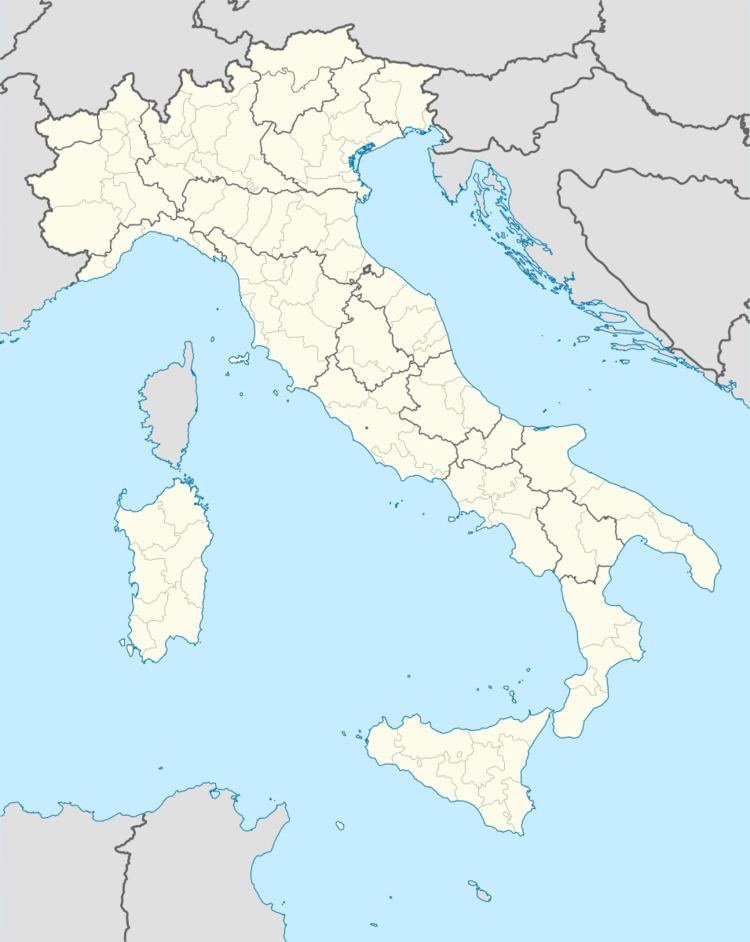Frazioni Marina di Amendolara Demonym(s) Amendolaresi Area 64 km² Local time Tuesday 9:14 AM | Elevation 227 m (745 ft) Time zone CET (UTC+1) Postal code 87071 Dialling code 0981 | |
 | ||
Weather 13°C, Wind SW at 21 km/h, 80% Humidity | ||
Amendolara is a town and comune in the province of Cosenza in the Calabria region of southern Italy.
Contents
Map of 87071 Amendolara Province of Cosenza, Italy
It has a population of approximately 3,167 people (the Amendolaresi). Its territory covers 64 km² and it is 100 km from the provincial capital of Cosenza.
The city is at an altitude of 200 meters above sea level and overlooks the Ionian Sea.
Mario Melfi was the mayor of the city from 2001 to 16 May 2011. The new mayor elected is Antonello Ciminelli.
History
The name probably derives from the Latin Amygdalaria (mandorlai), due to the area's high production of almonds. Based on archaeological sites in the area, it is believed that the territory was already inhabited in the Neolithic period (6000-4000 BC) and that the human presence became stable in the Protostorica Age (3500-8000 BC), when a community settled in the area of today's Old District (Rione Vecchio).
With the foundation of Sybaris by the Achaeans, the population that inhabited the protostorico area of the Old District in the seventh century. BC moved to the brilliant and wide area of San Nicola. In this place was built a new city, called Lagaria.
After having suffered the Roman domination, Amendolara had a thriving religious life, first with the Byzantine activities, then with the Cistercian, as evidenced by the many churches and hermits' caves located in the territory. After building the castle around 1000 AD, there appeared dynasties.
In the sixteenth century the Dominicans built the convent and built the split tower (torre spaccata). For two centuries there were battles between feudal lords and the city for the conquest of the land confiscated during the feudal period. In 1700 the plots became real farms and were divided between the municipality and the state, which sold them to the representatives of the most powerful middle-class families.
During the nineteenth century Amendolara was a viable center for the dissemination of liberal ideas, but it is also suffered the plundering of the most important works of art contained in the churches. In 1848 the population was now reduced to poverty and they rebelled against the landowners occupying the lands of Straface. Poverty and unemployment led to a significant migration to Argentina and northern Italy which lasted for nearly a century. However, the Amendolaresi remained, did not give up, and pushed toward economic, political and cultural recovery.
Mayors
Mayors of Amendolara from 1809:
Podestà
Podestà of Amendolara:
Gastronomy
The food is a strong tradition and cultural tourist attraction of the place. It actively contributes to the socio-economic growth. The cuisine is simple, genuine, and uses local vegetables. The culinary tradition of Amendolara puts its resources based on the agriculture of the "Alto Jonio Cosentino", and is characterized by the use of basic ingredients in common with the countries of Sybaris. The recipes differ among families and depending on personal taste.
A common first course is rascjcatilli, fresh pasta made with flour and water in the form of small pieces plucked with the fingers and topped with fresh tomato sauce and basil or lamb ragout and a sprinkling of chili pepper. Ferrazuoli is fresh pasta in the shape of sticks, gouged with a thin iron square, and topped with meat ragout. Both are peasant dishes, often enhanced by the intense flavor of ricotta cheese and grated flake directly over the plate at time of service.
Typical Christmas desserts include I crispi, made with wheat flour, water and yeast, shaped like big rings, fried in olive oil, and topped with sugar icing. I cannaricoli are big dumplings made of flour, black pepper, wine and a pinch of yeast, then fried in olive oil.
During Easter, it was common to prepare cullure and pastizzi. Cullura is the Easter bread, with an original meaning of new life. The dough is made with flour, eggs, cinnamon, fennel seeds, lard, salt and yeast. The whole is worked and shaped like a crown. Pastizzi are pseudo-pants made with flour, lard, salt and pepper, stuffed with meat and entrails of kid, seasoned with pepper, parsley, and garlic, browned in olive oil with the addition of sausage, then baked in the oven.
